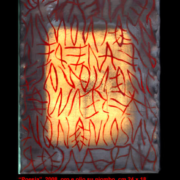Presentation, “Sensoriality, corporeity, and sexuality in the group”
All the articles in this issue are linked by the common vision of an holistic relationship between psyche and soma. According to this shared idea, as Corbella pointed out in her contribution, sensoriality is “defined both as an intrinsic quality of living things and as a subjective sensory experience. It is connected to both the mind and the body, providing the very foundations of our sexuality, our experience of pleasure and pain and therefore of our being-in-the-world”. The issue begins with Friedman’s contribution about the dream in the group, which is considered as a point of integration between psyche and soma, where the human being is present in his or her completeness. This issue points out that, when dreams originate from constructive preconscious aspects, they lead to new perspectives and also to new synaptic paths. In particular, in its harmonious and detailed work Notes on sensoriality, corporeity and sexuality in the group, Paola Russo Read more

